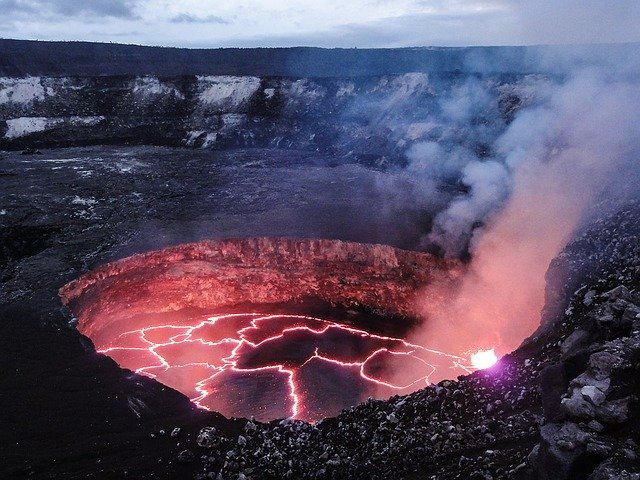Taal Volcano is one of the most active and dangerous volcanoes of the Philippines. In 1911 when the volcano erupted it killed 1,334 people and caused ash fall as far as Manila city, 60 kilometers away. Now researchers in the Philippines are closely monitoring the volcanic activity for signs of a major eruption.
It should be noted that Taal's activity has eased now, but scientists said that the threat of a large-scale eruption still remains which could contaminate water supplies and disrupt power generation for millions of people as well as halt ground and air travel.
After the recent volcanic events, almost 6,000 people, the residents of the island evacuated earlier have returned to their homes now but scientists believe that it was too early and highly unsafe to allow people live in vicinity of the volcano.
Taal Volcano activity

Located about 60 km south of the capital Manila, the volcano on the Taal Volcano island, which is formed by overlapping stratovolcanoes, cinder cones and tuff rings, started ejecting lava at around 2:30 pm local time on January 12. During the recent volcanic activity, it has blown a giant plume of rock fragments, known as tephra, up to 15 km high. The volcanic ash travelled as far north as Quezon City and forced thousands of people at Taal Volcano Island and its nearby localities to evacuate.
Mariton Bornas, a volcanologist, and head of the division responsible for monitoring and predicting eruptions at the Philippine Institute of Volcanology and Seismology (PHIVOLCS) in Quezon City, recently mentioned that even though Taal's activity has stalled, it doesn't mean that the worst is over.
The volcano is still at level 4, which is the highest level on the Philippines' volcano alert system. As per the scientists, this clearly states that a hazardous eruption could happen in hours or days. It should be noted that as per PHIVOLCS, scientists have recorded almost 450 volcanic earthquakes in one day.
The threat of major eruption looms large along with the frequent volcanic earthquakes. The scientists noticed the emergence of fissures and receding of the surrounding lake. After analyzing all these activities, the volcanologist believes that the magma is continuing to rise to the Taal's surface from deep in the earth core.
The history of disastrous events
As per the recorded data starting from the 6th century to the present, the volcano has erupted about 30 times and four of them were highly devastating events. Perla Reyes, another volcanologist at PHIVOLCS along with Bornas, has recently published an assessment report on the volcanic activity and mentioned that the increased seismic activity which they noticed since January 12, preceded most of those mega eruptions.
A major volcanic eruption that occurred in 1754, lasted for months and caused massive damage in the island. If a similar incident happens again, it would be the worst-case scenario, says Bornas. In case the volcanic eruption lasts for months, it would be devastating for the local residents. It would force two million people living within 35 kilometers of the volcano to abandon their homes.
The future volcanic eruption

However, a geophysicist at the French National Centre for Scientific Research (CNRS) in Aubière, Jacques Zlotnicki said that the crisis will escalate any time soon. Zlotnicki claimed that Taal is due for a large eruption. In his research, he mentioned that "Large plumes expelled at [heights of] 10 to 15 kilometres or more could reach Manila within a few hours, depending on the winds."
Danniko Rivera, a senior specialist at PHIVOLCS said anyone within the established danger zone during an eruption will most likely die due to the intense volcanic activity. In addition, he said, "It is hazardous because the movement [of magma will be] fast and hot " and that it would be deadly for someone in the vicinity.
Another scientist, Carlo Arcilla of the National Institute of Geological Sciences warned that the temperature of the magma, ranging from 600 to 1,000 degrees Celsius, will most likely be the leading cause of death for anyone within the danger zone. He said, "What will kill you is when you breathe in the 600-degree air, that's a fast death," and "You will be burnt."









